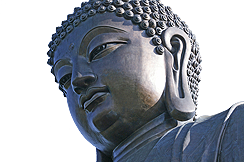- 1. Vài đoạn ngắn của giáo pháp (Fragments of a Teaching)
- 2. Món quà Pháp bảo (A Gift of Dhamma)
- 3. Bản chất của giáo pháp (Dhamma Nature)
- 4. Hai mặt của thực tại (The Two Faces of Reality)
- 5. Pháp luyện tâm (The Training of the Heart)
- 6. Sống với rắn độc ( Living With the Cobra)
- 7. Đọc cái tâm thiên nhiên (Reading the Natural Mind)
- 8. Hãy khởi hành ( Start Doing It)
- 9. Vấn đáp (Questions and Answers)
Copyright © 1982 The Sangha, Bung Wai Forest Monastery
Mục lục
 1. Vài đoạn ngắn của giáo pháp
1. Vài đoạn ngắn của giáo pháp
2. Món quà Pháp bảo
3. Bản chất của giáo pháp
4. Hai mặt của thực tại
5. Pháp luyện tâm
6. Sống với rắn độc
7. Đọc cái tâm thiên nhiên
8. Hãy khởi hành!
9. Vấn đáp
Ajaan Chah
 Ajahn Chah was born into a large and comfortable family in a rural village in Northeast Thailand. He ordained as a novice in early youth and on reaching the age of twenty took higher ordination as a monk. As a young monk he studied some basic Dhamma, Discipline and scriptures. Later he practiced meditation under the guidance of several of the local Meditation Masters in the Ascetic Forest Tradition. He wandered for a number of years in the style of an ascetic monk, sleeping in forests, caves and cremation grounds, and spent a short but enlightening period with Ajahn Mun, one of the most famous and respected Thai Meditation Masters of this century.
Ajahn Chah was born into a large and comfortable family in a rural village in Northeast Thailand. He ordained as a novice in early youth and on reaching the age of twenty took higher ordination as a monk. As a young monk he studied some basic Dhamma, Discipline and scriptures. Later he practiced meditation under the guidance of several of the local Meditation Masters in the Ascetic Forest Tradition. He wandered for a number of years in the style of an ascetic monk, sleeping in forests, caves and cremation grounds, and spent a short but enlightening period with Ajahn Mun, one of the most famous and respected Thai Meditation Masters of this century.
After many years of travel and practice, he was invited to settle in a thick forest grove near the village of his birth. This grove was uninhabited, known as a place of cobras, tigers and ghosts, thus being as he said, the perfect location for a forest monk. Around Ajahn Chah a large monastery formed as more and more monks, nuns and lay-people came to hear his teachings and stay on to practice with him. Now there are disciples teaching more than forty mountain and forest branch temples throughout Thailand and in England.
On entering Wat Pah Pong one is likely to encounter monks drawing water from a well, and a sign on the path that says: "You there, be quiet! We're trying to meditate." Although there is group meditation twice a day and sometimes a talk by Ajahn Chah, the heart of the meditation is the way of life. Monks do manual work, dye and sew their own robes, make most of their own requisites and keep the monastery buildings and grounds in immaculate shape. Monks here live extremely simply following the ascetic precepts of eating once a day from the almsbowl and limiting their possessions and robes. Scattered throughout the forest are individual huts where monks live and meditate in solitude, and where they practice walking meditation on cleared paths under the trees.
Discipline is extremely strict enabling one to lead a simple and pure life in a harmoniously regulated community where virtue, meditation and understanding may be skillfully and continuously cultivated.
Ajahn Chah's simple yet profound style of teaching has a special appeal to Westerners, and many have come to study and practice with him, quite a few for many years. In 1975 Wat Pa Nanachat was established near Wat Pah Pong as a special training monastery for the growing numbers of Westerners interested in undertaking monastic training. Since then Ajahn Chah's large following of senior Western disciples has begun the work of spreading the Dhamma to the West. Ajahn Chah has himself travelled twice to Europe and North America, and has established a thriving branch monastery in Sussex, England.
Wisdom is a way of living and being, and Ajahn Chah has endeavoured to preserve the simple life-style of the monks order that people may study and practice the Dhamma in the present day.
Ajahn Chah's wonderfully simple style of teaching can be deceptive. It is often only after we have heard something many times that suddenly our minds are ripe and somehow the Teaching takes on a much deeper meaning. His skillful means in tailoring his explanations of Dhamma to time and place, and to the understanding and sensitivity of his audience, is marvelous to see. Sometimes on paper though, it can make him seem inconsistent or even self-contradictory! At such times the reader should remember that these words are a record of a living experience. Similarly, if the Teachings may seem to vary at times from tradition, it should be borne in mind that the Venerable Ajahn speaks always from the heart, from the depths of his own meditative experience.
Namo Tassa Bhagavato Arahato Samma-Sambuddhassa
(What-Buddha-Taught.net)
Bài đọc thêm:
Tìm Hiểu Phật Giáo Theravada, Hoang Phong



